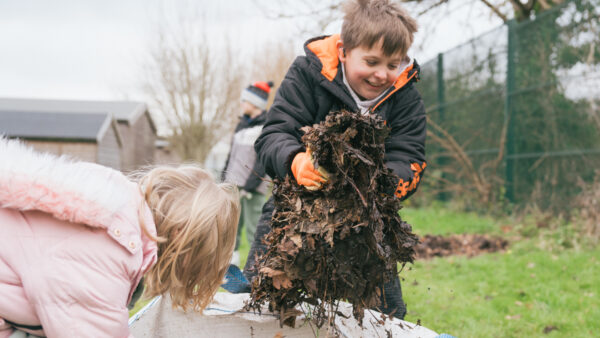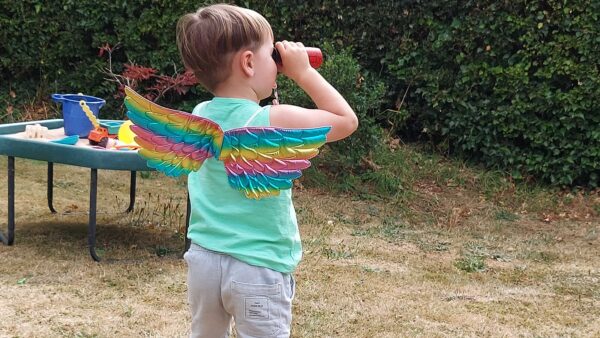Nature palettes are a great way of encouraging you to pay closer attention to what's around. To zoom in on detail, to touch, collect and create. They have been used by environmental educators for many years, we have simply extended their use so they make a great sensory experience for people of all ages and abilities.
You can use them to put an emphasis on a particular sense or to encourage people to explore through a mix of different senses. They work well with people of all ages and abilities, and their simplicity and low-cost make them popular with educators, and professional and home carers.
How to make a nature palette
Nature palettes are easy and cheap to prepare and very easy to use. You simply need a piece of cardboard (or equivalent), sufficiently thick to stay rigid. It can be any size (though much bigger than A5 gets a bit cumbersome to use) and any shape. Cover the palette with double-sided sticky tape. Just peel off the top layer when you are ready to use it.
Look out for colourful flowers, shiny leaves, soft moss, spiky grass, crunchy twigs and... well just about anything you can find! And that's all there is to it, get sticking!
How to use a nature palette
We use nature palettes to encourage people to explore through more of their senses, often putting an emphasis on collecting textures, scents and shapes as well as visual patterns.
Nature palettes are a really simple and quick activity to put together and can be done in even the smallest of green spaces.
Another option it to match colours to a paint swatch card (easy to get from a DIY store). Trying to match the subtle shades and scents in nature to those on the swatch is a great way of encouraging people to observe more closely.
Collecting herbs - the oils in the leaves will smell for weeks - a DIY 'scratch and sniff card'!




